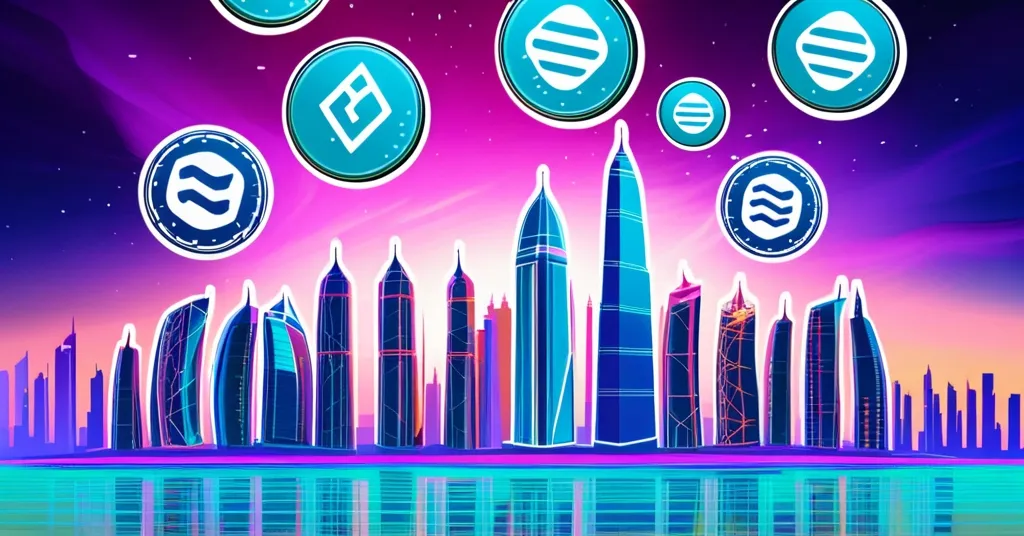Ripple Expands in MENA: Aims to Revolutionize Finance with Stablecoins

Ripple Strengthens Presence in Middle East and Africa, Eyes Stablecoin Expansion
Ripple, the enterprise blockchain giant, is intensifying its efforts in the Middle East and Africa (MENA) region, leveraging the UAE’s progressive regulatory environment to drive blockchain and stablecoin innovation forward.
- Ripple’s commitment to MENA region
- UAE’s progressive regulations
- Focus on stablecoins, custody, tokenization
- Long-standing partnerships with banks
- Regional headquarters in Dubai
Ripple’s Commitment to MENA
Ripple is not just dipping its toes into the MENA region; it’s diving in headfirst. Reece Merrick, Ripple’s managing director for MENA, has made it crystal clear: “The future of finance is being built here.” The UAE, in particular, has caught Ripple’s eye with its forward-thinking approach to blockchain and stablecoins. This isn’t just about setting up shop; it’s about revolutionizing the financial landscape.
UAE’s Regulatory Environment
The UAE has been a beacon of progressive regulation, with the UAE Central Bank making headlines in 2023 by greenlighting payments using dirham-pegged stablecoins. This move not only sets a global standard but also cements the UAE’s position as a hub for blockchain innovation. In the words of Merrick, “Stablecoins are cutting costs & speeding up transfers—bringing the Middle East, South Asia, & Africa together like never before.” Stablecoins, which are cryptocurrencies pegged to stable assets like the US dollar, can revolutionize cross-border payments by sidestepping traditional banking systems, reducing costs, and speeding up transactions.
The Role of Stablecoins
Stablecoins are more than just another crypto buzzword; they’re a game-changer. By reducing the cost and time of cross-border payments, they’re knitting the financial ecosystems of the Middle East, South Asia, and Africa closer together. Tokenization, the process of converting real-world assets into digital tokens on a blockchain, further enhances this connectivity by making assets easier to trade and manage. RippleNet, Ripple’s global payments network, plays a crucial role here, connecting financial institutions to facilitate these faster and cheaper transactions.
Ripple’s Strategic Moves
Ripple’s strategy in the MENA region is laser-focused on three key areas: cryptocurrency custody, tokenization, and stablecoin regulation. These aren’t just buzzwords; they’re the pillars of a new financial era. Ripple’s deep roots in the region, with partnerships spanning banks in the UAE, Kuwait, and Saudi Arabia, are a testament to its long-term commitment. Take, for example, the National Bank of Fujairah (NBF) joining RippleNet in 2020—a move that’s just the tip of the iceberg.
During the SEC lawsuit drama, Ripple even flirted with the idea of relocating its global headquarters to the UAE. San Francisco might have won the battle, but Ripple’s regional headquarters in Dubai, opened in November 2020, and the significant regulatory approvals secured last year, show that the company is all in on the Middle East. No bullshit—Ripple’s got big plans, and they’re betting on the MENA region like a gambler in Vegas—high stakes, but potentially high rewards.
Challenges and Counterpoints
While the potential is sky-high, let’s not ignore the elephant in the room: the road ahead is littered with regulatory hurdles and market volatility. The UAE’s dual regulatory framework, with the Virtual Assets Regulatory Authority (VARA) overseeing non-UAE dirham-backed stablecoins and the UAE Central Bank handling dirham-backed ones, adds complexity to the mix. Moreover, the recent SEC decision to drop an enforcement case involving the Ethereum network hints at a shifting regulatory landscape that could impact Ripple’s strategies.
From a Bitcoin maximalist perspective, Ripple’s focus on stablecoins and other cryptocurrencies might seem like a sideshow. Are these technologies truly challenging Bitcoin’s dominance, or are they merely filling niches that Bitcoin itself isn’t suited to fill? While Bitcoin remains the king of digital gold, Ripple’s efforts in the MENA region highlight the diverse ecosystem of cryptocurrencies and blockchain technologies driving financial innovation.
Key Questions and Takeaways
- What is Ripple’s commitment to the MENA region?
Ripple is committed to advancing the cryptocurrency ecosystem in the Middle East and Africa, focusing on areas like cryptocurrency custody, tokenization, and stablecoin regulation.
- How has the UAE supported blockchain and stablecoin innovation?
The UAE has implemented progressive regulations, including those from the UAE Central Bank that allow payments using dirham-pegged stablecoins, fostering a conducive environment for blockchain innovation.
- What role do stablecoins play in the MENA region?
Stablecoins are instrumental in reducing costs and speeding up transfers, thereby enhancing financial connectivity between the Middle East, South Asia, and Africa.
- What are Ripple’s key focus areas in the MENA region?
Ripple is focusing on cryptocurrency custody, tokenization, and stablecoin regulation in the Middle East and Africa.
- What significant steps has Ripple taken in the UAE?
Ripple has secured partnerships with banking institutions, opened a regional headquarters in Dubai, and obtained key regulatory approvals to expand its services in the UAE.
- How did the SEC lawsuit impact Ripple’s strategic decisions?
The SEC lawsuit prompted Ripple to consider relocating its global headquarters to the UAE, among other countries, although it ultimately decided to remain in San Francisco.
In the dance between regulation and innovation, Ripple’s moves in the MENA region promise to accelerate financial innovation. But as we watch every step, let’s keep our eyes peeled for the challenges that lie ahead. The crypto landscape is ever-evolving, and while optimism fuels progress, a healthy dose of realism keeps us grounded.



